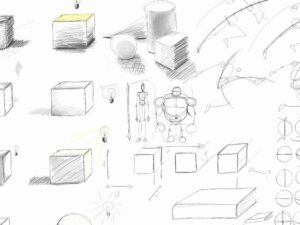Preparing Powerful Consulting Presentations
- Description
- Curriculum
- FAQ
- Reviews

The majority of business communication happens with the use of presentations. Decks of PowerPoint and Keynote slides are used during most business meetings, they are employed to summarise key ideas in written communication and even replace Word documents as the form of choice for longer text pieces that include charts and graphics. In short, presentations are ubiquitous. Whether you still study, work in business or the public sector, or do research chances are you work with slide decks almost every day. If you are involved in creating any kind of slides used to convey information you will profit from taking this course.
Consultants of the top consulting firms are widely considered the masters of powerful presentations. The reason for it is their use of specific tools and rules when preparing presentations. In this course you will learn about these methods (and see examples of their use) which include:
- adjusting your presentations to its purpose and audience
- using the SPQA (Situation, Problem, Question, Answers) framework to define your presentation
- structuring your slides vertically and horizontally and filling them with meaningful charts
- abiding by several slide construction rules and argument structuring guidelines
- using checklists to make sure your slides are flawless.
I will also walk you through best practices of slides preparation and equip you with pre-defined rule sets for preparing powerful presentations that you will be able to download.
Enroll now and take your presentation skills to the next level!
-
1Your purpose and your audience
Lecture content: how a given situation/scenario defines the way you think about the purpose of your presentation, your audience, the slides' content and style. Also, what kind of frameworks are often employed by consultants of the top consulting firms to plan out a presentation
Key words: audience, purpose, content, style
-
2How to start your presentation?
Lecture content: There are basically three ways to start a presentation one can choose depending on the presentation circumstances. The lecture answers the questions when to choose which of the three.
Key words: diagnostic oriented, facts oriented, action oriented, starting point
-
3Horizontal and vertical logic
Lecture content: Every presentation should be structured along two dimensions: the horizontal and the vertical. The former ought to glue adjacent slides together, while the latter makes sense of information flow on every slide. This lesson teaches how to make meaningful use of these dimensions.
Key words: horizontal logic, vertical logic
-
4Adjusting to a different presentation scenario
-
54 stages of presentation preparation
Lecture content: How to plan the work on a deck of slides. What should be done before jumping into PowerPoint and Keynote and editing slide files?
Key words: task definition, thought structuring, document drafting, work review
-
6SPQA - Situation, Problem, Question, Answers
Lecture content: Framing the whole presentation using SPQA with the use of an actual example.
Key words: SPQA framework, situation, problem, question, answers
-
7Structuring thoughts and slides
Lecture content: How to make use of the piramid principle in building convincing slides. Building clear inductive or deductive arguments and mapping them onto slides.
Key words: pyramid principle, argumentation, logical tree, logical chain, probing question, follow on question, core message, main message, inductive reasoning, deductive reasoning
-
8Slides sequencing
Lecture content: Building slides with the use of deduction or induction. When to use which method?
Key words: logical tree, logical chain, inductive reasoning, deductive reasoning, core message, supporting message
-
9Constructing a slide
Lecture content: What to consider when constructing a slide from top (header) to bottom (footer) including general rules for all visual elements.
Key words: header, topic, body, keep it simple and stupid
-
10Reviewing the flow
Lecture content: What questions to ask when reviewing a complete presentation draft? How to confirm that the flow of your slides makes sense and that separate slides are easy to understand.
Key words: storyline, flow, sequence, logic, structure
-
11Reviewing every slide
Lecture content: Twelve specific rules on all aspects of slide deck creation including meaningful structuring, compelling visuals, homogenous use of texts and graphical elements
Key words: tracker, animations, transitions, homogenous, unification
-
12Charts - best practices
Lecture content: Meaningful tables and charts that fit the core message versus bad examples. Learning best practices by analyzing work of others'
Key words: tables, charts, qualitative, quantitative, pie chart, bar chart, column chart, dot chart, curve chart, matrix, process, org chart, gantt chart
-
13Good vs a bad slides
Lecture content: Good slides versus bad slides. Examples of real life slides with comments. Applying lessons learnt to improve slide construction for the future
Key words: header, template, graphics, charts, coloring, so what








